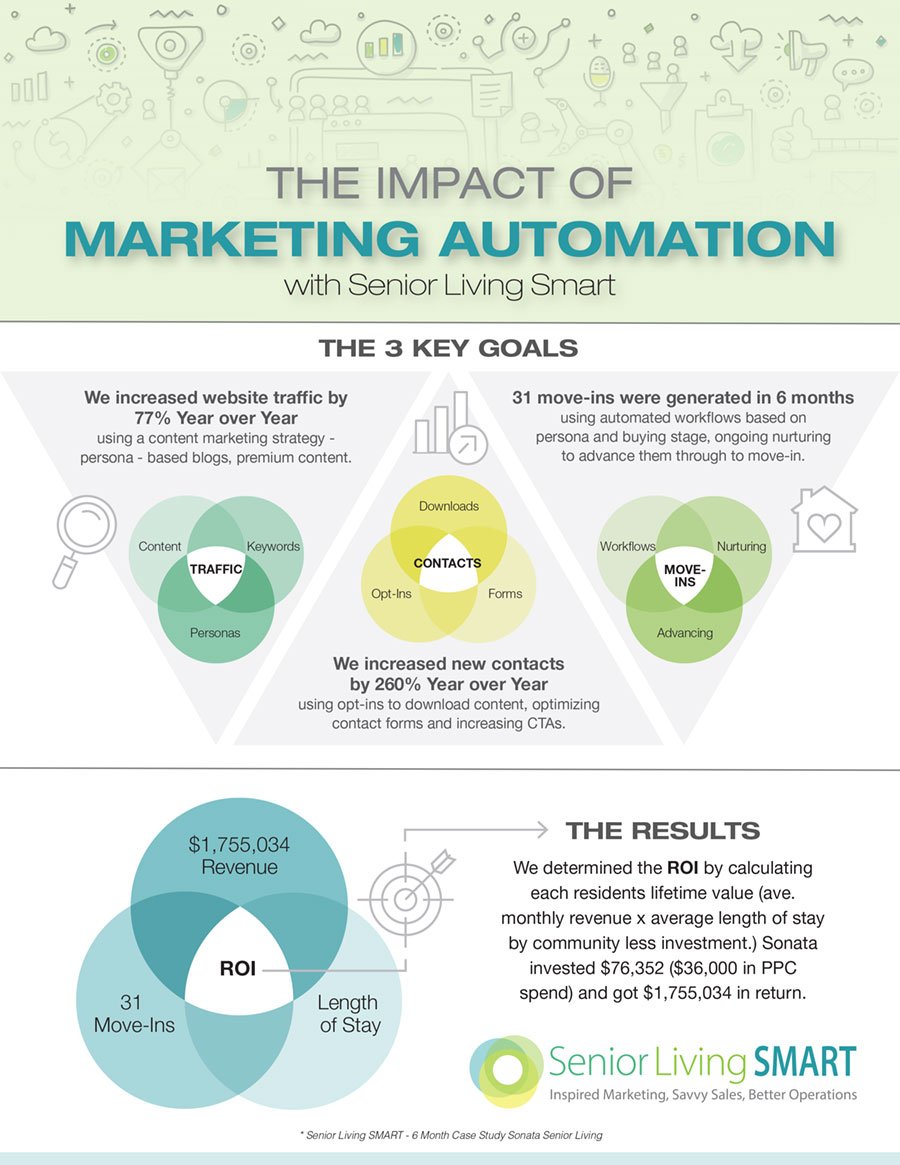Senior Living Marketing: How to Position Your Community Post-COVID
If there’s one thing COVID taught us, it’s this: the senior living industry still has a lot to do when it comes to effectively marketing itself. How many times did the media and consumers use the words “senior living” and “nursing homes” interchangeably?
The answer: TOO OFTEN.
Collectively, we all need to do a better job communicating the differences between these terms. We also need to get better at communicating the many benefits the senior lifestyle provides in general, and especially during a pandemic).
So, as you plan your content and senior living marketing for the next 6-12 months, remember the following key messages. Adjust, as needed, for your senior living community.
Important Senior Living Marketing Messages to Promote:
Message #1: Senior living is a great lifestyle.
Capture and share the “great lifestyle” aspect of your community through pictures and videos and share, share, share.
Some ideas:
- Residents working out in the fitness center or partaking in a class, like yoga
- Seniors enjoying the pool
- Residents enjoying happy hour at the pub
- Seniors enjoying the comfort of their spacious apartment/residence—show them reading, doing a puzzle, reading, knitting
Message #2: A senior living community is very different from a nursing home.
You need to contrast senior living with nursing homes. Keep it straightforward and high level. Plus, focus on the key differences that matter most to people.
Here’s some copy to work from…
Senior living is an enriching lifestyle for older adults. The lifestyle encompasses the following:
- Active lifestyle communities
- 55+ communities
- Independent living
- Retirement communities (and all of its synonyms)
- Assisted living (sometimes with or without a Memory Care “neighborhood”)
Nursing homes, on the other hand, provide skilled 24/7 nursing care in a residential setting for elderly or disabled people. Senior living communities don’t provide 24/7 skilled nursing care.
While senior living communities weren’t spared from COVID-19, the incidence in senior living communities was typically much lower than in nursing homes. The main reason for this? Nursing home residents often live in tighter quarters with roommates. Plus, nearly half are 85 or older.
Message #3: “My senior living community made me feel safe during the pandemic.”
Gather testimonials from residents, their family members, and your staff about what daily life was like during the pandemic.
Make sure your testimonials cover the following themes, specifically how…
- Residents always had plenty of food/healthy meals
- No one had to worry about prescription refills/pickups
- The community’s industrial supply chain was strong—no shortage of toilet paper or cleaning supplies!
- Family members could rest easy knowing that mom or dad was safe and taken care of
- The staff felt supported, cared for, and valued by the community’s leadership and residents
Message #4: Here’s what COVID-19 taught our senior living community.
You can’t shy away from this issue, so use this opportunity to transparently share how your community dealt with COVID-19.
No one is expecting perfection. In fact, many people would be rightfully skeptical if they heard such a message. If you had some cases, or even an outbreak, talk about it. (Remember, nothing is legally prohibiting you from talking about raw numbers in a general way.)
If your numbers were low, you can promote that fact, but don’t get cocky and gloat. If you had higher numbers than you would have liked, stress what your community learned from this reality. Talk about improvements. Discuss the protocol if there’s a second wave.
Most importantly, keep your COVID-19 resource center easily accessible on your website for the next 12-18 months. Keep it updated. You should have an FAQ section or page. Regularly add answers to the most common questions you hear. Listen closely to residents, families, prospects, and staff—ask them what questions they have.
Share these key messages regularly across various channels, including…
- Social media
- Key website pages (home, contact, COVID-19 resource page, schedule a tour landing page)
- Blog posts
- Local newspaper ads
- Quick guides/brochures (e.g., “X Reasons Why Our Senior Living Community is a GREAT Lifestyle Choice—Even During a Global Pandemic”)












